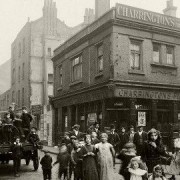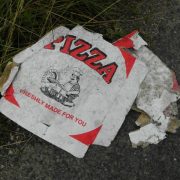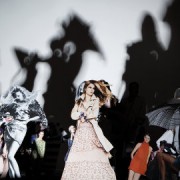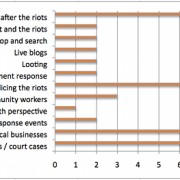The far-Right is on the march – lock up your daughters and run for the hills! Suited and booted with paper poppy in buttonhole, the BNP can now lay claim to 58 councillors out of a national total of almost 22,000.
The recent hysteria generated in part by BNP leader Nick Griffin’s shambolic appearance on the BBC’s Question Time programme has achieved little beyond a paranoid infatuation with the far-Right on the part of the chattering classes and a wealth of free publicity for the BNP.
Of course, it would be naïve to assume that anywhere is immune to their insidious politics. South east London has – like many areas – flirted with the far-Right. The BNP won its first council seat in Tower Hamlets in 1993. The National Front (NF) stood candidates in Lewisham until recently. In Newham the BNP has two councillors. In Barking and Dagenham – an aberration – it has 12.
In London’s 2008 mayoral elections, won by Boris Johnson, the BNP succeeded in placing Richard Barnbrook, a resident of Lewisham, on the Greater London Assembly (GLA). The party gained 5.3 per cent of the London-wide vote.
These Lilliputian victories are undeniably disturbing, but one must remember that parties such as the BNP and NF are, by and large, too disorganised to pose any real threat beyond the knuckles and boots of those stupid or disaffected enough to listen to their vacuous ‘policies’. Realism and complacency are not one and the same.
Although south east London has fallen prey to the serpentine charms of the far-Right on occasion, what has remained steadfast is its opposition to bigotry and racism, as can be demonstrated by even the most cursory glance at the area’s political and cultural history.
In 1936, Tower Hamlets’ Cable Street was scene to perhaps the most defining anti-fascist action in Britain’s history. Oswald Moseley and his black-shirted British Union of Fascists (BUF) attempted to march through the predominantly Jewish area in a provocative show of force. Local people joined forces and attacked the fascists, driving them off the streets.
What came to be known as the Battle of Cable Street can be said to have inspired those who took to the streets of Lewisham almost 50 years later. In 1977 the NF – the drooling grandchild of Moseley’s BUF – attempted to march through Lewisham’s streets, once more in a provocative display of force. Local people again joined forces and drove the fascists off the streets.
On May 6th Britain’s voters will go to the polls, on both local and national levels. The voters of the London boroughs of Hackney, Lewisham and Newham will also be voting for mayors. The BNP has expressed its intention to stand a mayoral candidate in each of these boroughs. The party also plans to field around 30 parliamentary candidates across London during the elections.
In Lewisham, Tess Culnane is to stand for the BNP as their mayoral candidate. Culnane previously ran for the NF in the 2008 Haltemprice and Howden by-election in Yorkshire. She also stood for the NF in the 2008 London Assembly elections, polling 8,509 votes in Greenwich and Lewisham.
The NF describes itself as supporting the re-instalment of the death penalty for “terrorist offences” – the irony obviously lost on a ‘party’ who has various members currently imprisoned for acts of terrorism. These would include Terence Gavan, a joint BNP/NF member who pleaded guilty to possessing explosives and firearms, and David Copeland, who detonated nail bombs across London, murdering three – including a woman pregnant with twins.
Cllr Jarman Parmar, who is also chair of Lewisham Anti-Racist Action Group (LARAG), said: “I can’t see them getting anywhere with this. They play games. I think they’d have a better chance in Greenwich. We’ve always fought them and I doubt very much they’ll achieve anything. The BNP is a party based on hate. It has nothing to offer the people of Lewisham, and I have great confidence that the people of Lewisham will recognise this.”
On the streets, it is hard to find anyone willing to express their support for a BNP mayor. Siobhan Fitzgerald, 41, from Deptford, said: “I didn’t even know they had a following here. I’ve lived in Lewisham my whole life and would say that at times there have been tensions between black and white. But I think that’s very much a thing of the past. I remember when you’d see NF graffiti on walls, but that was over 20 years ago. I think the BNP needs to wake up – it’s 2010.”
Although the BNP has expressed its desire to stand a mayoral candidate in Hackney, it has yet to announce who this might be. A lack of money and/or candidates may well be to blame.
In Hackney, the BNP won only 1409 votes in the 2008 GLA elections. In addition, the BNP has failed to field a single council candidate since 1998. The last time the BNP’s membership list was leaked to the press, it revealed only seven card-carrying members in the borough.
Cllr Matt Coggins said: “They’re not going to stand. For one, they’re unlikely to find a qualified candidate and secondly, they’re unlikely to find 30 people who would support a BNP mayoral candidate in Hackney. A party needs a proposer, a seconder and 28 people on the electoral register who support the mayoral candidate. It is a publicity stunt and they have no support here.”
Blanche D’Albert, 29, from Clapton, was unaware of the BNP putting forward a mayoral candidate. She said: “I didn’t know about it, to be honest. But I can’t see them making much progress. This is Hackney. Everyone I know prides themselves on Hackney’s diversity. I love that I can have a fry-up for breakfast, a kebab for lunch and jerk chicken for dinner. Who wouldn’t?”
Croydon – more satellite town than suburb – is alleged to have one of the oldest and largest BNP branches in London. It is also home to Lunar House, the headquarters of the UK Border Agency. It is where the majority of asylum applications take place. The building contains ‘short-term reception areas’ in which migrants – including children – are detained.
Last year, the BNP’s Croydon Central candidate, Clifford Le May, was investigated by his own party after writing “Stop ruining our community by stuffing New Addington with violent immigrants who have no right to live among decent civilised white people” on a questionnaire distributed by the local Conservative party asking residents if they had any particular concerns.
In another incident, BNP candidate Charlotte Lewis left racially offensive messages on a social networking site.
A spokesman for Unite against Fascism said: “I don’t think Croydon is particularly representative of London. If you look at the electoral patterns associated with fascist parties, they tend to achieve success in the outer suburbs. Jean Marie le Pen called it ‘the halo effect’. In those areas where blacks and whites live side by side, fascist groups have very little support.”
Tower Hamlets is one such area. 33. 4 per cent of the population is Bangladeshi, according to the 2001 census, and the area has a long and proud history of anti-fascism. Curtain Road was for many years home to the Jewish rag trade. As the trade moved west and the workshops closed, a new wave of migrants moved into the area – the majority being south Asian.
Locals still take pride in their historical opposition to fascism. In the 1980s, a large mural depicting the Battle of Cable Street was painted on the side of St. George’s Town Hall by artist David Binnington. It was vandalized by fascists on numerous occasions, before being painted with a paint-proof varnish in the mid 1990s. A red plaque in Dock Street also commemorates the event.
A spokesman for Respect, which represents Cable Street today, did not believe the far-Right posed much of a threat. He said: “The east end, and particularly this area, has always been proud of its diversity. People of all different races and religions live side by side, as they have done for many, many years. I think the BNP would be wasting its time and money if it chose to campaign here.”
The vast majority of the people of south east London recognise, as they always have, that the far-Right offers nothing and takes everything. There will always be protest votes and disillusionment – this is nothing new. However, it seems unlikely in that the far-Right will have any significant impact on south east London.
The BNP is in a state of disarray; it is currently unable to recruit new members, and is losing others, as a result of its racist constitution having been declared illegal by the Equality and Human Rights Commission. As a result, it would appear unable to build the momentum required to transform itself from a single-issue pressure group – which is what it has always been – into any type of real political force.





